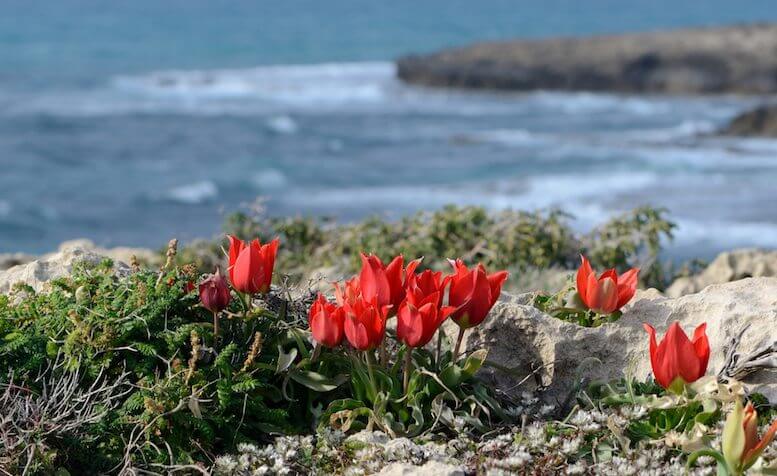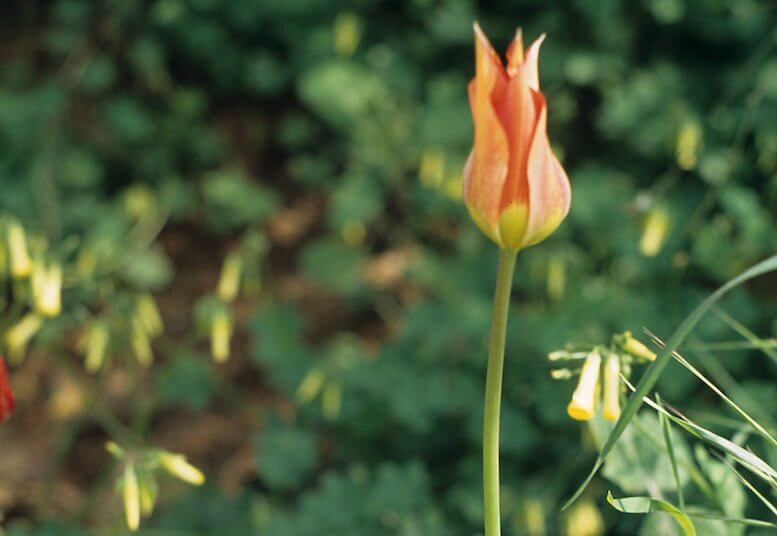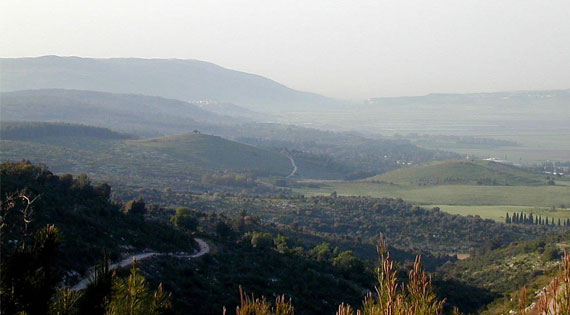
The Bible speaks often of marriage. After all, God began the human race with it. His first command to the man and woman, “Be fruitful and multiply,” required the physical union the Song of Songs extols.

(Photo: The Rose of Sharon along Israel’s coast, by Gideon Pisanty [CC BY-SA 3.0, via Wikimedia Commons)
God inspired metaphors of biblical geography and botany to highlight one of the most important aspects in any healthy marriage.
It’s something your marriage needs.
The Rose of Sharon
Although the bride in Solomon’s song initially felt insecure about her looks, after Solomon’s words of affirmation, she compared herself to two beautiful flowers:
I am the rose of Sharon, the lily of the valleys. (Song of Solomon 2:1)

(Photo: Sharon tulip, the Rose of Sharon. Courtesy of the Pictorial Library of Bible Lands)
The Rose of Sharon commonly gets identified today as the Hibiscus, and the Hebrew term appears elsewhere only in Isaiah 35:1, where it is translated “crocus.” But the biblical Rose of Sharon was likely the Sharon tulip, a reddish-orange wildflower that grows in the sandy soils of the Plain of Sharon, a fertile coastal region that stretched from Caesarea to Joppa. The “lily of the valleys” is likely the narcissus, another common flower from the Sharon Plain.
Solomon’s affirmation of her causes her to bloom. It seems as if she concedes that he thinks she’s beautiful, but she sees her beauty as common, only one of many beautiful women. Solomon continues to praise her, affirming her as unique.
In fact, the metaphors of botany and geography throughout the book serve as methods of affirmation. Two examples:
- She likened him to blossoms in Engedi, a refreshing and coveted oasis beside the Dead Sea’s shores (1:14). That’s affirmation.
- Likewise, he compared her head to Mount Carmel, a symbol of great elevation in Israel (7:5). Again, affirmation.
See the pattern?

(Photo: Lovely Mount Carmel. Courtesy of the Pictorial Library of Bible Lands)
What Words Must Be in Marriage
Many marriages today ignore the value of loving affirmation and turn instead to a critical tongue or a pointing finger.
But the couple in the Song of Songs never does this. Instead, they repeatedly affirm one another in spite of their imperfections. They model the importance of frequent and sincere affirmation in marriage as well as physical union. In fact, an encouraging, godly attitude becomes the most attractive part of a person—even when physical beauty fades.
For all that needs to change in your marriage, the best place to start is with yourself. After all, you’re the only individual you can change. Apply the wisdom of Solomon and offer affirmation to your spouse—and prayers of blessing—instead of gripes, groans, and eyes that roll.
Give your heart to this task today, just as you vowed to do years ago.
Tell me what you think: Why do you think affirmation makes such a difference? To leave a comment, just click here.
 Like This Post? Get the Whole Book!
Like This Post? Get the Whole Book!
This post is adapted from Wayne’s book, Going Places with God: A Devotional Journey Through the Lands of the Bible.
• These 90 devotional readings, each based on a specific place in the lands of the Bible, will help you apply the truths of God’s Word to your daily journey of faith.
• You’ll enjoy pertinent Scripture, inspirational quotes, photographs, maps, and a daily prayer.
After going places with God, you’ll never be the same.
Click here to leave a comment.
-1.png?width=5230&height=1198&name=unnamed%20(4)-1.png)

.jpg?width=350&name=Wayne-books-350wide%20(1).jpg)




